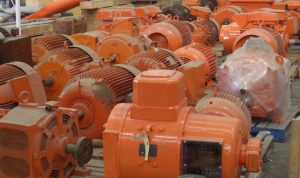 Maintenance and reliability engineers will happily (well, not happily) undertake a review of spare parts that are not classified as critical, yet they will shy away from reviewing items that are classified as critical spare parts.
Maintenance and reliability engineers will happily (well, not happily) undertake a review of spare parts that are not classified as critical, yet they will shy away from reviewing items that are classified as critical spare parts.
Why?
Why should you choose to avoid reviewing spare parts that are classified as critical?
The argument put forward is: ‘the item is critical and so therefore we must stock it’.
This means that the classification drives the review action rather than a cost benefit or stocking analysis.
But what if the classification was wrong, or the item was significantly overstocked, or the supply arrangements had changed?
Surely these are factors that can be reviewed and have nothing to do with the part’s criticality?
It doesn’t make sense to limit your review action based on the idea of criticality alone.
This will drive you to review parts that are critical but not defined as such and not review parts that are defined as critical but which may no longer be critical.
Classifying items as critical spare parts tells us that we need to have ready access to the items when required, it doesn’t tell us what the alternatives are or how many we need to carry.
Nor does it tell us whether we need to actually own the items prior to needing them.
Therefore, you should not shy away from reviewing critical spare parts.
They may be just as overstocked as any other item, or there just might be a viable alternative to holding the item at all.
Our Spare Parts Criticality Assessment Tool can help you assess whether a specific spare part is critical to your operations and should be held in inventory.
It is precisely because the issues are many and the nuances subtle that here at SparePartsKnowHow.com we have developed as a platform to access a wide range of resources relating to spare parts inventory management and optimization.
Author: Phillip Slater